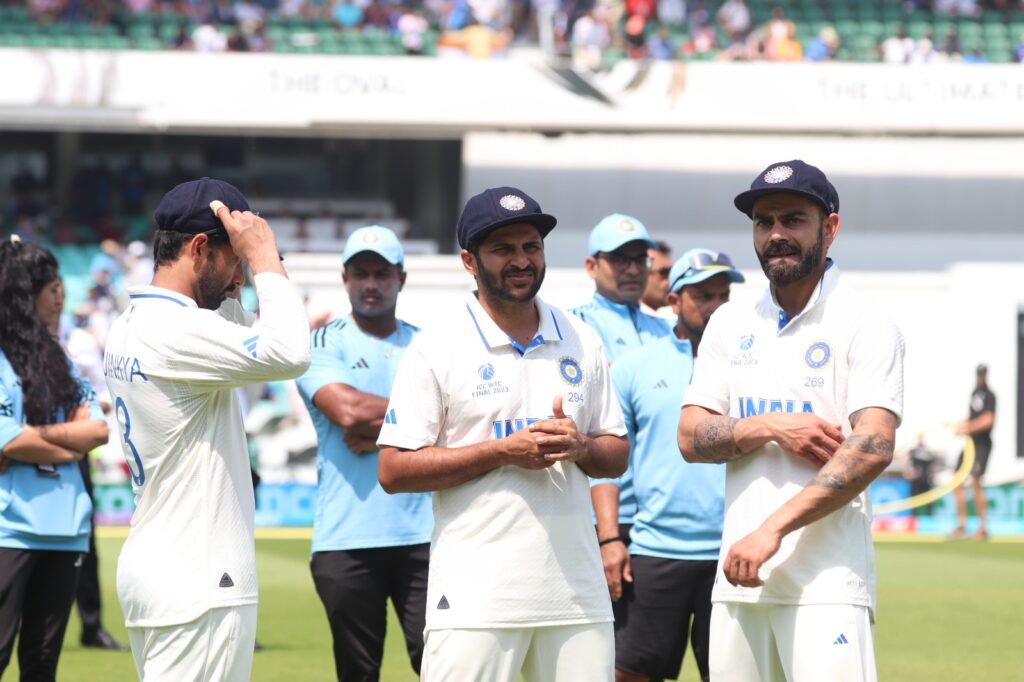
Howler! When it comes to cricket, this is a word usually associated with fielders dropping the easiest of catches, or umpires making glaring mistakes. These are acts which make jaws drop because they are so scarcely believable. People remember these for long just because of how bizarre they were.
When the time comes to look back on India’s performance in the World Test Championship (WTC) final against Australia at The Oval, we will immediately notice howlers from some of India’s most reliable and experienced batters in the second innings. The pursuit of 444 was always steep and even improbable, but India were in the game until these seasoned batters committed those blunders.
Rohit Sharma and Cheteshwar Pujara had withstood the loss of Shubman Gill, and were scoring at a fast clip during their 51-run partnership for the second wicket. It was not enough to put Australia under any real pressure, but had they stayed together for about an hour or more, the momentum might have shifted.
Instead, Rohit went for a sweep against Nathan Lyon, which was not the need of the hour, and then Pujara played the most un-Pujara-like shot of his life. That attempted ramp shot off Pat Cummins when the ball was fairly close to his body was an absolute shocker. These two dismissals in quick succession immediately pushed India back into the deep hole that they were trying to clamber out of.
Virat Kohli batted beautifully, in complete control and playing the ball on merit. With Ajinkya Rahane, he forged a fourth-wicket partnership of 86 to once again raise Indian hopes. Not of a win maybe, but at least putting up a fight. And then he chased with hard hands a Scott Boland delivery which was on around the sixth-stump line. With three slips in position, that was just uncalled for.

This is not to suggest by any means that India would have won or drawn this match had these three batters not tried those shots. In all likelihood, India would still have lost. But, the match would have lasted longer, may be even gone to the last hour. That would have been befitting of the world’s No. 1 Test team, not this tame surrender.
It’s easy to describe such indiscretions as improper shot selection. Actually, it was more than that. This is called lack of application. Each one of these batters knew what the need of the hour was, how to go about it, and what needed to be done. There are 262 Test matches between the three. And yet, they ended up cutting such sorry figures.
Compare this with Australia’s approach. David Warner is a naturally aggressive batter who likes going after the ball. On the first morning, the ball was doing something, and Mohammed Shami and Mohammed Siraj were making it talk. Fresh from the Indian Premier League, Warner left as many balls as possible, curbed his instincts and set the platform for those that followed. The same goes for Steve Smith, who dropped anchor when Travis Head cut loose.
This difference in the approach of the senior batters from the two sides stood out. India did not lose a second consecutive WTC final only because of this. Sure, there were other factors. But the manner in which Rohit, Pujara and Kohli were dismissed stood out like a sore thumb. Time heals everything. This loss will also become a distant memory down the line. But it’s unlikely that India’s most reliable trio will forget this in a hurry.




